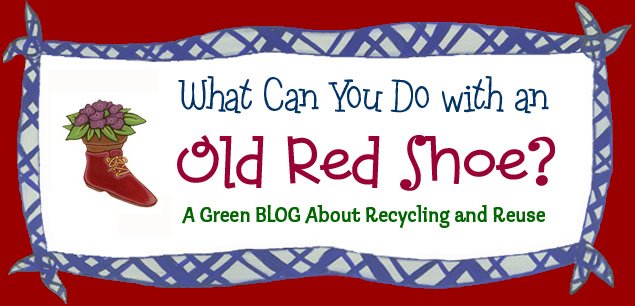This is a guest post I wrote for Katie's Literature Lounge when I visited her blog during Earth Week, I thought it would make sense to post it here as well!
I was recently asked why Old Red Shoe is aimed at young children, when they are not able to make much of a contribution to our environmental predicament. Why teach them that their contributions make a difference, when in reality there are far greater changes that need to occur to really impact the direction our environment is going in? This question got me thinking about how we got in the situation we're in to begin with.
We live in a culture that values stuff. We work hard to make stuff, to buy stuff, to collect stuff. We sometimes measure our success by how much stuff we have accumulated, and who has more of it. Growing up in our culture, you can't help but be affected by these values, try as we might to teach kids that caring for others, generosity, and kindness are far nobler attributes.
I made Old Red Shoe not because I thought that kids turning cans into lanterns would change the world, but to make a simple truth plain and clear to its readers: we are responsible for the world we live in. The book is meant to be used as a tool to explain that concept and to get kids to think twice about what they throw in the trash and where it goes. It is meant to show them that we are responsible for our stuff.
I think you can't be too young to learn this and I hope the book introduces the concept in a useful way. We all know that many kids learn best hands on... rather than lecturing about the importance of the environment, I think showing kids simple things they can do makes more of an impact. I am thrilled to see other books for kids taking the same approach (see this round-up of environmental books for kids), its an honor to be included among them!
Some additional tips for kids and families (from the book):
KIDS:
* When you make a drawing, use both sides of your piece of paper, instead of two separate sheets.
* Use a lunchbox instead of a paper bag to carry your lunch to school.
* After you use a plastic bag, rinse it out and let it dry so that you can use it again.
* Save styrofoam food trays and wash them thoroughly. When they dry, use them as paint palettes, a surface to draw on, or turn them into stamps.
* Write to companies that make products with packaging that is not recyclable and ask them to change how they package their products, so that they can help the environment, too.
THE WHOLE FAMILY:
* Buy recycled products, such as toilet paper, stationary, and computer supplies.
* Avoid prepackaged food items, especially if the packaging is not recyclable.
* Take a cloth bag with you when you go shopping so you won’t need plastic or paper bags.
* Use plastic or glass bottles to store drinks for kid’s lunches, instead of juice boxes. Also, get reusable storage containers to hold the food in their lunchbox, rather than using plastic bags or aluminum foil.
* When you go to a restaurant, bring a reusable plastic or glass container to bring home your leftovers.
Friday, May 8, 2009
Subscribe to:
Post Comments (Atom)



This comment has been removed by a blog administrator.
ReplyDelete